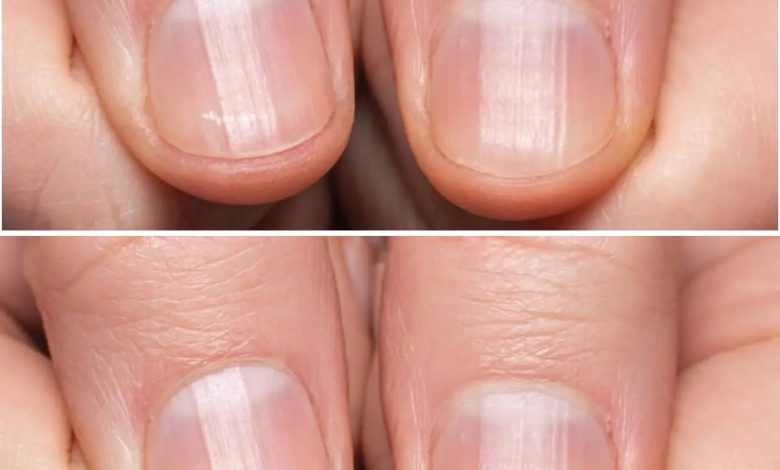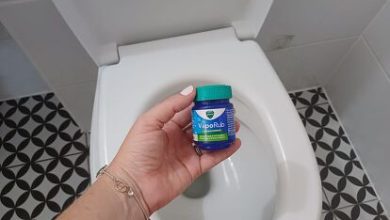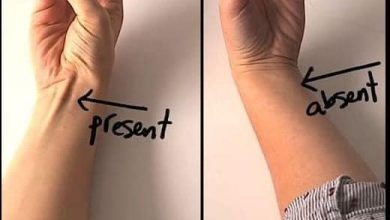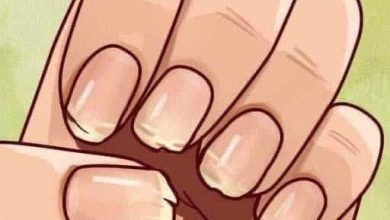What Your Fingernails Might Be Telling You

“Striped nails” refer to the appearance of various lines, grooves, or ridges that can show up on your fingernail or toenail plates. These markings can differ greatly in how noticeable they are, ranging from barely visible lines to more pronounced indentations. The presence of these stripes can sometimes offer valuable clues about your general health and well-being. Let’s take a closer look at what different types of striped nails might indicate.
ADVERTISEMENT
1. Vertical Ridges: Often a Normal Part of Aging
Many people notice fine, parallel lines running from the base of the nail to the tip. These are known as vertical ridges.
ADVERTISEMENT
What “It Could Mean”:
ADVERTISEMENT
- Natural Aging Process: Just like our skin, our nails also show signs of aging. As we get older, nail growth can become slower and less even, which often leads to the development of these harmless vertical ridges. It’s a very common and usually benign occurrence.
- Mild Dehydration: Not drinking enough water throughout the day can impact various bodily functions, including the health and appearance of your nails. Proper hydration is essential for overall well-being, and even mild dehydration can subtly affect nail quality.
- Nutrient Deficiency: Sometimes, a lack of certain vital nutrients can contribute to the formation of ridges. “Lack of essential vitamins like B-complex (especially biotin), iron, or zinc may contribute to ridges.” These nutrients play a crucial role in nail formation and strength.
What to Do:
- Make sure to stay hydrated by drinking plenty of water daily.
- Focus on eating a balanced diet that is rich in fruits, vegetables, lean proteins, and whole grains to ensure you’re getting all necessary vitamins and minerals.
- “Consider taking a multivitamin or biotin supplement after consulting with a healthcare provider.” It’s always a good idea to chat with a doctor before starting any new supplements.
- For a smoother look, “use a gentle nail buffer to smooth out ridges for a polished appearance.” However, be careful not to over-buff, as this can thin the nail.
2. Horizontal Ridges (Beau’s Lines): A Sign to Pay Attention To
Unlike vertical ridges, horizontal ridges, also called Beau’s lines, run across the nail plate. These can sometimes be a more significant indicator of a past health event.
What “It Could Mean”:
- Recent Illness or Stress: “Horizontal ridges can form after a severe illness, fever, or extreme stress, as nail growth temporarily halts.” This means that the nail growth was briefly interrupted, leaving a mark as it continued to grow out.
- Nutritional Deficiencies: “Low levels of zinc, iron, or protein may cause these lines.” These nutrients are vital for continuous and healthy nail production.
- Underlying Conditions: In some cases, “Thyroid disorders, diabetes, or circulatory problems could be linked to Beau’s lines.” This is why it’s important not to ignore them.
What to Do:
- It’s highly recommended to “consult a doctor to rule out underlying health issues” if you notice Beau’s lines. They can help determine the cause.
- Prioritize a nutrient-rich diet to support your body’s recovery and overall health.
- “Keep nails trimmed and moisturized to prevent further damage.” This helps maintain nail integrity while you investigate the cause.
3. White Stripes or Lines: Potential Mineral Imbalance
If you see white spots or lines on your nails, it could be related to nutrient levels.
What “It Could Mean”:
- Zinc or Protein Deficiency: “White lines or streaks can indicate a lack of essential nutrients.” Both zinc and protein are crucial for healthy nail development.
- Liver or Kidney Issues: “In rare cases, white stripes may signal problems with these organs.” While less common, this possibility makes it important to monitor persistent white lines.
What to Do:
- “Eat zinc-rich foods like pumpkin seeds, chickpeas, and seafood.”
- “Include lean proteins such as chicken, eggs, or lentils in your diet.”
- “If symptoms persist, consult a healthcare professional for blood tests” to check your nutrient levels and organ function.
4. Dark Stripes or Discoloration: Seek Immediate Medical Attention
Any new or changing dark stripes on your nails warrant immediate professional evaluation.
What “It Could Mean”:
- Melanonychia: “Dark vertical stripes can be caused by increased melanin production, which is sometimes benign but should always be evaluated.” Melanin is the pigment that gives color to our skin and hair, and it can also appear in nails.
- Nail Melanoma: It’s rare, but “In rare cases, dark stripes may indicate skin cancer under the nail.” Early detection is key with any potential cancer.
What to Do:
- “See a dermatologist or doctor immediately to rule out serious conditions.” Do not delay this step.
- “Monitor for changes in stripe width, color, or texture” as this information will be helpful for your doctor.
5. Brittle or Grooved Nails with Stripes: Possible Thyroid or Hormonal Issues
When striped nails are also brittle or have deep grooves, it could point to hormonal imbalances.
What “It Could Mean”:
- Hypothyroidism: “Underactive thyroid can cause brittle nails with ridges.” The thyroid gland plays a significant role in regulating metabolism and overall body functions, including nail health.
- Hormonal Changes: “Pregnancy, menopause, or hormonal imbalances may affect nail health.” Fluctuations in hormones can impact nail growth and strength.
What to Do:
- “Get your thyroid function checked if you notice other symptoms like fatigue, weight changes, or hair loss.” These are common signs of thyroid issues.
- “Maintain a healthy diet and stay consistent with prescribed medications if you have a diagnosed condition.” Following medical advice is crucial for managing hormonal conditions.
General Tips for Keeping Your Nails Healthy
Beyond addressing specific types of stripes, here are some broad recommendations for maintaining strong and healthy nails:
- Moisturize Regularly: “Use cuticle oil or hand cream to keep nails hydrated.” This helps prevent dryness and brittleness.
- Protect Your Nails: “Avoid harsh chemicals, excessive filing, or biting your nails.” Wear gloves when cleaning, and be gentle when shaping your nails.
- Eat a Balanced Diet: “Focus on vitamins and minerals like biotin, iron, zinc, and omega-3 fatty acids.” A nutritious diet provides the building blocks for healthy nails.
- Stay Hydrated: “Drink plenty of water to support overall nail health.” This helps maintain moisture in your body, including your nails.
- Monitor Changes: “Keep an eye on any new or worsening nail symptoms and consult a doctor if needed.” Being aware of changes can help you address issues early.
When to Seek Professional Medical Advice
While many nail changes are harmless, it’s wise to consult a doctor if:
“If your striped nails are accompanied by other symptoms like fatigue, hair loss, skin discoloration, or pain, it’s important to seek medical advice.” A healthcare provider can conduct various tests to identify potential nutrient deficiencies, hormonal imbalances, or underlying systemic conditions that might be affecting your nail health.
Final Thoughts on Striped Nails
“Striped nails are often harmless, but they can sometimes be a sign that your body needs attention.” Your nails can act as small indicators of your overall health. “By paying close attention to your nail health and addressing any underlying issues, you can ensure both your nails and overall well-being stay in top shape.” Don’t hesitate to consult with a medical professional if you have any concerns about changes in your nails.
Have you ever noticed changes in your nails and wondered what they meant? Or perhaps you have some great tips for keeping nails healthy? Share your experiences below!




